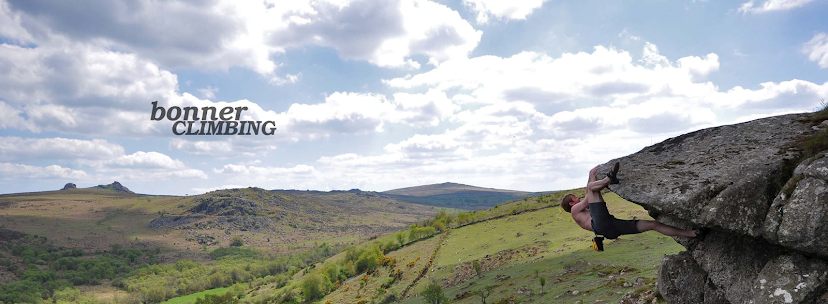Basic Principle
Your anchor/belay needs to pull in an upward direction on the first pitch, subsequent pitches need both up and down pull. It cannot be stressed enough that you belay needs to be bomb proof, its your first and last line of defence!
Once you have a bomb proof belay you can start climbing, placing protection as you go. Once at the top of the pitch, build another belay, rap down and clean the route, then reascend and repeat.
Tying In Method
This is the safest method you can use for roped soloing (knot security wise!), but falling near the start the start of the belay will result in a long fall.
A double bowline is tied in to the harness, the tail of the knot is clipped back to the main rope loop so there is no chance of it coming undone. The slack rope is also clipped in to the karabiner so you don't clip it by accident in to protection.
The knot is tied a few meters from your anchor/belay.
You start climbing as normal placing protection. When you start getting short on rope use a cowstail to clip in to a piece of protection. Tie a second knot, switch the karabiner to the new knot, untie the old one to release slack in to the system - then continue climbing.
ADVANTAGES: The safest option; no backup not required.
DISADVANTAGES: Time consuming, cannot feed slack, long fall from near belay.
Clove Hitch Method
The lead rope goes from your belay to where it is attached to your belay loop with a clove hitch. The clove hitch then goes to your backup knot. The slack is either fed from your belay, or alternatively a bag on your back.
The length of the loop between your clove hitch and backup knot depends on the nature of the climb.
More slack can be pulled through one handed, or by using a karabiner through a strand of the clove hitch to make it easier.
Be carefull using the karabiner though, as if it were to clip to something else it will most likely cause the knot to fail.
ADVANTAGES: Knot is always tied; able to give slack with one hand.
DISADVANTAGES: Time consuming still.
Black Diamond ATC Guide
This is in 'climbing mode'. The ATC is connected to the belay loop using a black diamond gridlock karabiner - this avoids any potential cross-loading. The rope is then clipped in to the sling chest harness. This is made by crossing the sling over your shoulders and tying a parisian baudrier. The purpose of the sling is to orient the belay device so the rope runs smoothly as you climb.

This picture shows the device when loaded (or a fall), and the rope is locked off.
A backup knot is not shown is these pictures for clarity. But ideally a knot would be tied to another karabiner. When you need more slack, stop, tie a new knot, then untie the old one.
I would not use anything less than a 10mm rope with this set up. Thinner ropes may cross over each other in the device and possibly cause heat/friction.
The only main downside to this setup, is it will not catch head first falls - thats why you have a backup knot!
ADVANTAGES: Automatically feeds rope out.
DISADVANTAGES: Cannot stop upside down falls.



